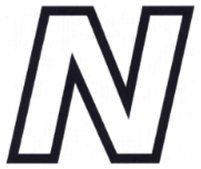Ms. Haiyu Li and Mr. Tingxi Huo of Chofn IP
On March 12, 2022, the Shanghai Intellectual Property Court gave its final judgment (number 2021Hu73MinZhong301) on the trademark infringement and unfair competition dispute between New Balance Athletics, Inc. (the plaintiff) and three defendants New Barlun (China) Co., Ltd. (defendant A), Shanghai Shiyi Trading Co., Ltd. (defendant B), and Shanghai Lusha Industrial Development Co., Ltd. (defendant C).
We summarize the case and draw out some key lessons.
Defendants A and B, respectively the registrant and licensee of the disputed trademark number 3954764 for shoes in class 25, were held jointly liable for damages of CNY25 million (about $3.7 million). Defendant C, as one of the retailers, was jointly responsible for damages of CNY100,000 ($14,815).
Plaintiff’s Trademark | Defendant A’s Trademark |
 |  |
No. 5942394, “Athletic shoes”, Class 25 Published for opposition on August 6, 2010 Registered on September 13, 2016 | No. 3954764, “Shoes”, Class 25 Registered on May 14, 2012 Declared invalid on September 29, 2019 |
The courts considered the two marks to be similar. They found that defendants A and B deliberately used the disputed trademark on both sides of the shoes, making the parties’ marks highly similar in actual use. Taking into consideration the high fame of the plaintiff’s trademark, the duration and scale of the defendants’ use, the extent of subjective malice and sales figures of the infringement, the first instance court awarded high damages to the plaintiff in the first instance. The Shanghai Intellectual Property Court upheld this decision in the second and final instance.
The courts have clarified some important issues in the ruling.
- Bad faith sours everything
First, registration in bad faith cannot be an armor for the holders to safely use the trademark even if its registration is approved by the China Trademark Office. The disputed trademark was actually registered in 2012 but was later invalidated in 2019. Under Article 47 of the Chinese Trademark Law, a registered trademark that is invalidated is deemed as non-existent from the beginning. The use by defendants A and B thus constituted infringement and the registration did not exempt the defendants from liability.
Secondly, the bad faith trademark user shall still bear liability for damages during the period from publication through registration of the plaintiff’s trademark. According to Article 36 of the Law, compensation shall be made for the losses caused to the registrant by the bad-faith user. The plaintiff’s trademark (number 5942394) was published for opposition on August 6, 2010, but was registered until September 13, 2016 due to the opposition, appeal and lawsuits initiated by defendant A. In other words, there was a six-year gap between the publication and registration. As defendants A and B acted in bad faith in registering and using the disputed trademark, they bear liability for the infringement before the registration approval date.
Thirdly, bad faith also undermines the subsequent acquisition. Defendant A is the third holder of the disputed trademark, the previous two holders being defendant A’s affiliated companies. In 2006 and 2012, the two previous holders’ use of the disputed trademark was ruled by other courts to be infringement of the plaintiff’s distinctive logo for famous products. Defendant A had well known the facts but still acquired the disputed trademark and granted a license to defendant B. Such acts cannot justify the defendants’ use, but simply demonstrate defendant A’s bad faith.
This leads to two important conclusions:
- As earlier trademarks registered in bad faith are fragile, if needed it is advisable to contest such trademarks.
- The acquisition of a bad faith trademark might risk losing the trademark or investment. Therefore, it is safer to re-file your own application even if you have acquired the trademark.
- The statutory maximum damage may not be the ceiling
In this case, the defendants refused to provide accounting records or evidence in their possession, so the courts used their discretion to determine the damages. Considering the plaintiff had exhausted its efforts to prove that the actual profit earned by defendants A and B was obviously higher than the statutory maximum damage of CNY5 million prescribed under Article 63 of the Trademark Law, the courts were not limited by the maximum, but used their discretion to award damages of CNY25 million, including the plaintiff’s reasonable expenses, to stop the infringement.
As China has no discovery, rights holders need to prove their own loss or the infringer’s profit caused by the infringement to claim damages. It is highly advisable to do your best to collect evidence to support your claim for damages. But it is also advisable to request the courts to order the infringers to submit the account books or evidence in their possession, and, if applicable, claim damages higher than the ceiling amount. The infringers’ refusal or provision of false evidence might result in the courts’ dependence on the rights holders’ one-sided evidence, particularly after the rights holders have exhausted their efforts.

